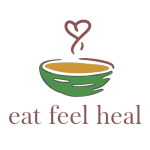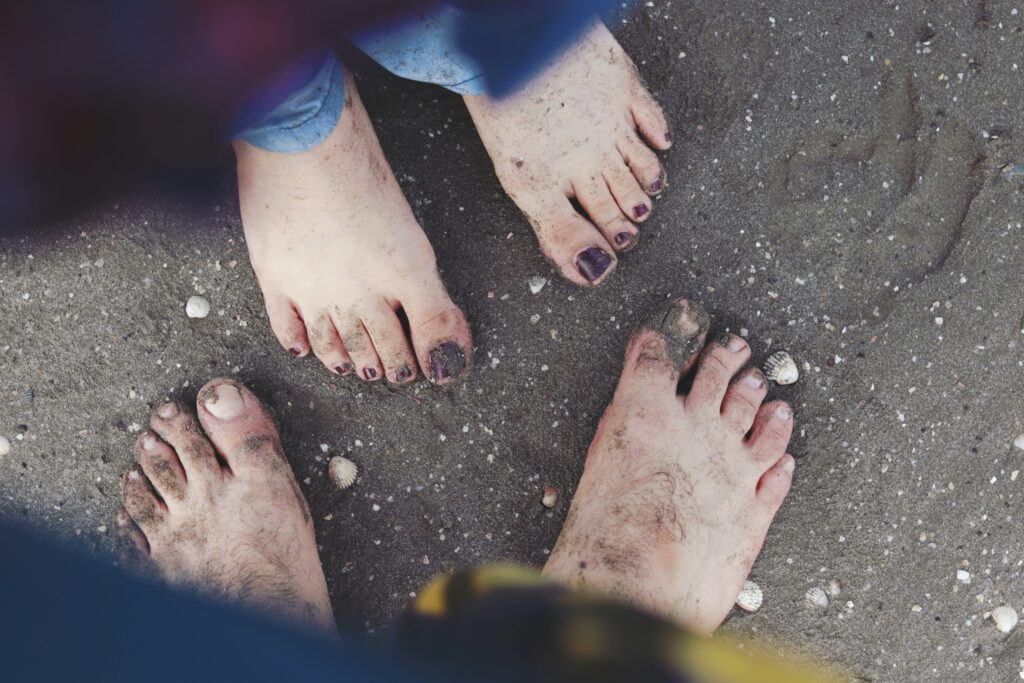There’s a quiet epidemic shaping our lives—so normalized, so widespread, we barely question it anymore.
It’s not a virus. Not a pathogen.
It’s burnout.
Not the kind you bounce back from after a weekend off or a few yoga classes.
I’m talking about deep, systemic, soul-level burnout. The kind that sneaks in silently over years. The kind that makes your body ache, your nervous system hum like a faulty wire, your gut collapse, your emotions flatten. The kind that leaves you present in body but absent in spirit.
The tragedy? We’ve started to treat it like the common cold—inevitable, manageable, something to patch up and push through.
But just like with colds, the relief is temporary. And the cycle repeats—more intense, more silent, more deeply woven into who we think we are.
We don’t just need relief.
We need recovery.
And more than that—we need prevention.
To do that, we have to go to the root.
And the root of burnout is disconnection.
️ The Slow Drift Away From Self
Burnout doesn’t usually begin in crisis.
It begins in drift.
We slowly drift away from our body’s messages. We override fatigue.
We numb discomfort.
We ignore the knot in the belly, the tightness in the jaw, the shallowness of the breath.
Not because we don’t care—but because we’re caught in momentum.
Work deadlines. Family pressures. Hustle culture. Inner perfectionism. Digital noise. The world’s speed is relentless.
And so we start living outside of ourselves.
In the head. In the screens. In the roles we’re performing.
That’s when burnout begins—long before the breakdown.
Disconnection becomes our baseline.
And when we disconnect from the body, we disconnect from truth.
Because the body is the truth.
It is the only place life is actually happening. And when we’re not anchored there, we’re slowly disappearing from our own lives.
From Disconnection to Dysregulation
Here’s what happens when this disconnection becomes chronic:
The nervous system can’t find its rhythm.
You wake up wired. Or flat. Or both.
You feel overwhelmed by simple tasks.
You start avoiding people, sensations, emotions.
You become hyper-responsive to stress—or completely numb.
You start relying on small dopamine hits just to get through the day—scrolling, sugar, caffeine, chaos.
Eventually, this state becomes embodied. The vagus nerve short-circuits. The gut-brain connection—meant to flow—gets stuck in a negative feedback loop.
The microbiome collapses.
The immune system goes haywire.
Inflammation becomes chronic.
Mood disorders appear.
Digestion weakens.
You may look “fine” on the outside—but inside, there’s a slow emergency.
And because we live in a world that normalizes this, we often don’t see it until the body forces us to.
The Way Back Begins With Food
Here’s where I want to offer something radical—but simple:
What if the way back doesn’t start with a protocol, a supplement, or a productivity hack?
What if it starts with food?
Not just what you eat—but how you eat.
Not just nutrition—but presence. Relationship. Ritual.
When we bring mindfulness to food, we begin to remember the body.
When we cook, chew, savor, and listen—we reconnect.
And that reconnection becomes a medicine far deeper than calories or nutrients.
Because every meal is a moment of choice:
To return to yourself.
To re-enter the body.
To remember the sacred.
Conscious Eating as Nervous System Medicine
The gut is not just a digestion site.
It’s your second brain.
Over 90% of your serotonin lives there.
Your gut microbiome speaks directly to your mood, your immunity, your inflammation levels, your sleep, your thoughts.
And when you’re burnt out, this ecosystem collapses.
But food—conscious, whole, seasonal, living food—can restore it.
More than that, how you eat can re-regulate the nervous system.
A meal eaten with gratitude and slowness is nervous system medicine.
A breath between bites is an act of vagal healing.
Eating with your hands, connecting with texture, pausing to smell—these are not just sensual acts, they are spiritual ones.
The meal becomes a ground.
A sacred pause.
A remembering.
Movement, Breath, and the Return to Feeling
But conscious eating alone is not enough.
Because the body doesn’t just digest food—it digests experience.
And so many of us are carrying undigested grief, stress, trauma, anger, ancestral burden.
It lives in the tissues. In the fascia. In the gut.
This is where movement and breath come in.
Not as workouts. Not as performance.
As pathways.
When we move with awareness—even gently—we re-enter the body.
When we breathe with attention—even simply—we release stored stress.
And when we do both around food—before a meal, after a meal—we deepen digestion on every level.
This is how burnout is slowly unwound.
Not in heroic interventions, but in micro-choices of reconnection.
Relief vs. Recovery vs. Prevention
Burnout recovery is not about relief. It’s about re-rooting.
And re-rooting means shifting the paradigm—from treatment to lifestyle.
From “fix me” to “feel me.”
From suppressing symptoms to cultivating relationship.
Relief is short-term. Recovery is relational.
Relief is intervention.
Prevention is integration.
You don’t just recover from burnout once. You build a life where it can’t take root again.
That life is built on presence.
And presence is built on relationship – food, breath, movement & feeling.
This Is the Real Work of Healing
People don’t just need better tools.
They need to remember themselves.
The burnout didn’t begin with stress. It began with silence.
With the moment you stopped hearing your own body.
With the moment your intuition was overridden.
With the moment you left your own side.
Food is how we come back.
Breath is how we soften.
Movement is how we unfreeze.
And relationship—with self, with Earth, with Source—is how we stay whole.
This is not a treatment.
This is a way of life.
And it is within reach.
An Invitation
I was burned out. Several times over twenty years. Emotionally numb, psychologically disassociated, autoimmune shutdown, nervous system deregulated. I tried so many avenues, pathways, protocols, treatments, therapists, medication, herbs, spiritual practices, books, you name it I tried it. But nothing rooted. I was stuck in a cycle of predictable collapse every 3 to 5 years, no matter what.
I created the Sacred Food Journey because I needed it. And now I have made it available and accessible for you – wherever you are in the world and wherever you are in your own journey. It’s a Forever Free gift into the world, because I know what it feels like to be caught in the quicksand, feeling like you’re going under with no lifeline to get you out.
It’s a gentle entry. It’s guided, but you choose your own pace. And it’s personal and private within the comfort of your own home and kitchen.
If you’d like to know a bit more, click here.
Appendix: Research, References, and Further Reading
1. Burnout, Stress, and Nervous System Dysregulation
Books:
• Van der Kolk, B. (2014). The Body Keeps the Score: Brain, Mind, and Body in the Healing of Trauma. Viking.
↳ Explains how unprocessed stress and trauma become embodied and affect mood, immunity, and gut-brain connection.
• Porges, S.W. (2011). The Polyvagal Theory: Neurophysiological Foundations of Emotions, Attachment, Communication, and Self-Regulation. Norton.
↳ Critical work on vagal tone and how social connection and safety cues regulate stress. Note: This work is a theory still under debate
2. Gut-Brain Axis, Microbiome, and Mood
Peer-Reviewed Research:
• Cryan, J.F., O’Riordan, K.J., et al. (2019). “The Microbiota-Gut-Brain Axis.” Physiological Reviews, 99(4), 1877–2013.
↳ Overview of how gut bacteria affect brain signaling, stress response, and neuroinflammation.
Books:
• Mayer, E.A. (2016). The Mind-Gut Connection: How the Hidden Conversation Within Our Bodies Impacts Our Mood, Our Choices, and Our Overall Health. Harper Wave.
↳ Accessible introduction to the bidirectional link between gut microbiota and emotional health.
3. Food as Relationship, Ritual, and Regulation
Books:
• Shiva, V. (2016). Who Really Feeds the World? The Failures of Agribusiness and the Promise of Agroecology. North Atlantic Books.
↳ Global view of food as relationship—not commodity—and how traditional foodways build resilience and health.
4. Breath, Movement, and Somatic Reconnection
Peer-Reviewed Research:
• Mehling, W.E. et al. (2011). “Body Awareness: A Phenomenological Inquiry into the Common Ground of Mind-Body Therapies.” Philosophy, Ethics, and Humanities in Medicine, 6(1), 6.
↳ Reviews body-based practices (breath, posture, food rituals) as essential for awareness, prevention, and healing.
Books:
• Emerson, D. (2015). Trauma-Sensitive Yoga in Therapy: Bringing the Body into Treatment. Norton.
↳ Gentle, conscious movement to interrupt trauma loops and restore connection to the body.
5. Burnout and Disconnection as Cultural Crisis
Books:
• Maté, G. (2022). The Myth of Normal: Trauma, Illness, and Healing in a Toxic Culture. Avery.
↳ Burnout as a symptom of societal disconnection; healing as reconnection.
• Hooks, B. (2000). All About Love: New Visions. William Morrow.
↳ Emotional isolation and burnout as cultural wounds; healing through self-love and presence.




